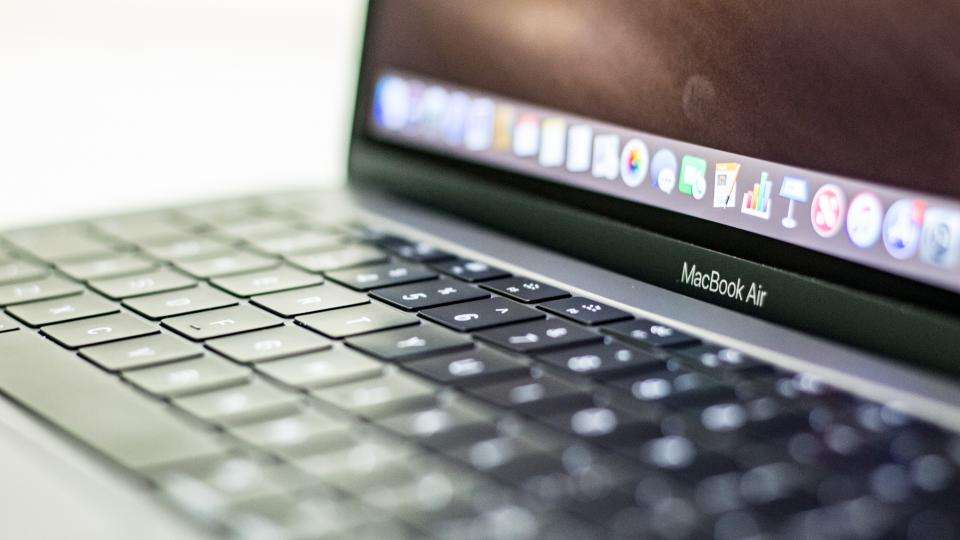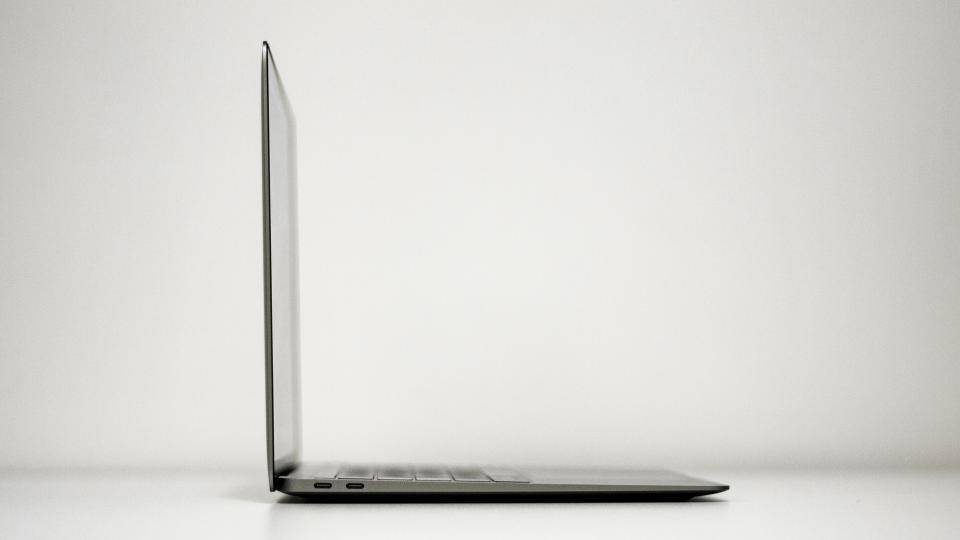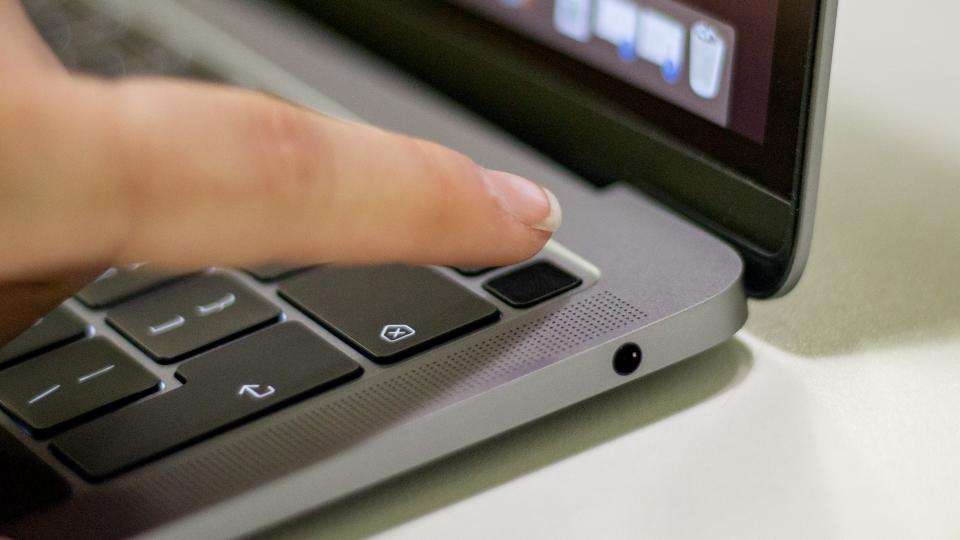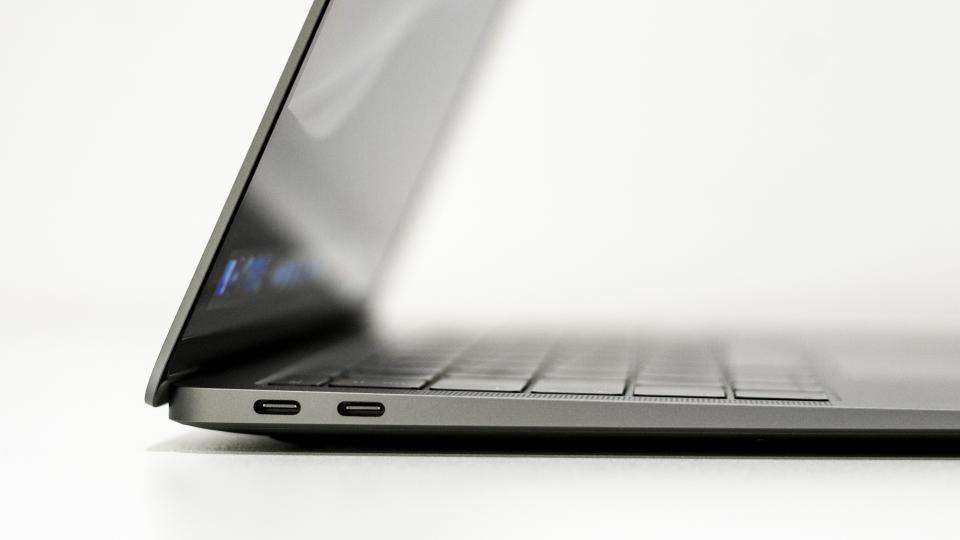The MacBook Air is still, even in 2018, an iconic laptop and for very good reason. It brought Apple laptops into the mainstream, and its combination of style, size, weight, and decent battery life made it a classic.
With Apple leaving the marque to gather dust in recent times, however, its appeal has slowly but surely waned. With other models gaining Retina displays, new features and more powerful innards, the old 13in MacBook Air was looking progressively more and more underpowered, old-fashioned and out of touch.
READ NEXT: Our guide to the best laptops you can buy today
Apple MacBook Air review: What you need to know
Apple is looking to fix all that with a much-anticipated, long-awaited overhaul. So what does the MacBook Air look like in 2018?
The headline addition is the feature everyone has been asking for for years: a Retina-class display. With a resolution of 2,560 x 1,600 and a pixel density of 227ppi, it’s a huge upgrade over the 1,440 x 900 resolution of the previous 13in MacBook Air.
The screen wasn’t the only area ripe for upgrade, though. Inside, at long last, the Air gets a boost from the 5th generation CPU of the previous Air and now has a selection of 8th generation Intel CPUs to choose from. Plus, Apple has also included a selection of subtle tweaks to bring the laptop into the modern age. The question is, can it recapture what made it so appealing to the masses?

Apple MacBook Air review: Price and competition
It can go a long way towards achieving that by getting the price right. The reason the MacBook Air has had such a cult following over the years is that, for many, it was their first Apple laptop. And it was their first because it offered a sensible balance between portability, great design and, most importantly, a reasonable price.
The new MacBook Air, in my opinion, misses the mark on that front. The cheapest model, which has a dual-core 1.6GHz 8th generation Intel Core i5, 8GB of RAM and 128GB of storage, starts at £1,199 (prices rise by £180 if you want 16GB of RAM, and by £200 per extra 256GB of SSD storage). That’s only £50 cheaper than the 12in MacBook and the lowest price 13in MacBook Pro.
Buy the 2018 MacBook Air from John Lewis

The other potential problem for the MacBook Air is that, although when it first launched there wasn’t much in the way of competition from the Windows fraternity, today there’s a much bigger selection of well-designed portables for people to choose from. Our current favourite, and the MacBook Air’s biggest rival, is the Microsoft Surface Laptop , which starts at £979 – a full £220 cheaper – and which has a comparable core specification.
There’s also a broad choice of rivals that are either cheaper, or more powerful, or both. The Asus Zenbook S , for instance, can be had for around £1,150 with an 8th-generation Core i5, 8GB of RAM and twice the MacBook Air’s storage at 256GB. A similar specification Dell XPS 13 costs £1,169 while the Asus Zenbook 13 will set you back even less at £900. You can also now buy the Huawei Matebook X Pro in the UK and with prices starting at £1,250, it's yet another strong alternative.
Apple MacBook Air review: Design and key features
Despite the much-needed overhaul, Apple hasn’t reinvented the wheel here. Instead, it’s brought the MacBook Air into line with the 12in MacBook and the 13in MacBook Pro in terms of its features and its looks.
You’d think Apple might have made more of an effort to distinguish the Air from the Pro, though. If you have the two open right next to each other on a desk, you’ll struggle to tell one from the other with a casual glance.
The Air is fractionally thicker at the rear and thinner at the nose, while the Pro maintains the same thickness front to back, and the Air is 120g lighter. Otherwise, the dimensions are the same down to the millimetre. Both are 304mm wide and 212mm deep, and the design elements are very similar.

The MacBook Air, just like the MacBook Pro, has a flush-fitted display with narrow, black bezels. It has a pair of Thunderbolt 3 USB Type-C ports on the left edge and a 3.5mm headphone jack on the right. Stereo speakers flank the shallow-travel keyboard, which has a Touch ID fingerprint reader nestled in its top-right corner, and a large glass-topped touchpad occupies the majority of the wristrest beneath.
The eagle-eyed among you might spot that the latter is ever-so-slightly smaller than in it is on the MacBook Pro but the difference is minor and, with Apple’s excellent Force Touch technology in place, it feels just as good to use.
Perhaps the only major visual difference between the MacBook Air and its pricier sibling is that it’s now available in Rose Gold as well as the classic Space Grey and silver colours. If you’re desperate to wear your MacBook Air colours on your sleeve, then Rose Gold is the one to go for.

MacBook Air (2018) review: Display
The display, as I’ve already highlighted, is a big improvement on the original MacBook Air, too. It’s sharper and easier on the eye than the original’s screen, has narrower bezels surrounding it and, generally, it’s exceedingly colour accurate as well. In other words, it’s all the things you’d expect of an Apple laptop display in 2018
Except that it doesn’t quite reach the level I’d have liked it to, especially given how good its rivals have become recently. It’s disappointing, for instance, that peak brightness reaches only 321cd/m2, which is 180cd/m2-odd below that of the MacBook Pro. That’s fine for use indoors in an office or your living room but in bright conditions, in the garden or with the sun streaming through your commuter train’s window, you might struggle to read it clearly.
The contrast ratio is fine, but at 951:1 it falls a long way short of the MacBook Pro’s 1,451:1. Finally, sRGB coverage in the browser, while very good at 93.2% is again a few marks shy of the MacBook Pro’s 99%.
MacBook Air (2018) review: Performance
Of course, a big of the appeal of the new MacBook Air overhaul is not just the new design and display; it’s the performance. The previous model, despite still being on sale, was stuck with a fifth-generation Intel CPU, so the 1.6GHz 8th generation dual-core Intel Core i5-8210Y in the new model comes as a very welcome boost.
Before progressing any further, though, you need to be aware of one key fact: this is the lowest performing variant of Intel’s eighth generation Core i5 CPUs: a Y-series CPU. The chips we’re more used to seeing in rival laptops at around this price are U-series parts, which typically perform much better.
READ NEXT: Our guide to the best laptops you can buy today
So, yes, while it is much faster than the old MacBook Air, it falls significantly short when compared with its rivals at this price, including the Microsoft Surface Laptop 2, most of which run the beefier variant of the Intel chip.
Below you’ll see that in both our in-house 4K media benchmarks and Geekbench 4, the MacBook Air is at the bottom of the pile, although its single-core score isn’t too bad.
As expected at this price, there’s no discrete graphics chip in the Air, just Intel’s UHD Graphics 617. This does the job but it won’t have you playing demanding games at high detail and frame rates. Again, as you can see from the benchmark results in the graph below, the MacBook Air lags behind most of its Windows-based rivals which employ the more powerful Intel UHD Graphics 620 integrated graphics.
The good news is that the storage speeds are stupendously quick. Testing with the BlackMagic Disk test utility revealed average read and write speeds of 1,871MB/sec and 1,065MB/sec respectively, speeds that outstrip those of the Surface Laptop 2 by some margin. Even heavy duty applications launch in a trice, so this is a laptop that feels very fast in use.
And battery life is pretty good, too. In fact, this is another area where it outperforms the Microsoft Surface Laptop 2, lasting 8hrs 34mins in our video rundown test, which we run with the screen set to a brightness of 170cd/m2 and flight mode engaged. As you can see from the graph below, though, we’re not talking life-changing differences here when compared with other rivals.
All of which adds up to a bit of a mixed picture when it comes to performance. You’re clearly not getting the most bang per buck when it comes to raw speed, but the Air compensates with good battery life and an exceptionally quick SSD.
Apple MacBook Air review: Verdict
Instead of delivering what MacBook Air fans desperately wanted – a laptop nearly as good as a MacBook Pro but for significantly less – what they’ve ended up with is a very good laptop that’s nearly as expensive but nowhere near as good.
That’s not to say the Apple MacBook Air is a bad laptop. In fact, it’s quite the opposite. It’s slim, attractive and beautifully made and Apple has improved it in all the places that count, adding a better keyboard, a superior touchpad, faster connectivity and a Retina display. This is very much a MacBook Air for the modern Apple era.
The trouble is, in doing so, Apple has abandoned territory it used to be able to call its own. The MacBook Air may be better than ever but it no longer stands out in way it used to.
|
Apple MacBook Air (2018) specifications |
|
Processor |
Dual-core Intel Core-i5 8510Y (1.6GHz) |
|
RAM |
8GB |
|
Additional memory slots |
0 |
|
Max. memory |
N/A |
|
Screen size |
13.3in |
|
Screen resolution |
2,560 x 1,600 |
|
Pixel density |
227ppi |
|
Screen type |
IPS |
|
Touchscreen |
No |
|
Pointing devices |
Touchpad |
|
Graphics adapter |
Intel UHD Graphics 615 |
|
Graphics outputs |
USB Type-C |
|
Graphics memory |
1.5GB |
|
Storage |
256GB |
|
Optical drive |
None |
|
Memory card slot |
None |
|
USB ports |
2 x USB Type-C (Thunderbolt 3) |
|
Other ports |
None |
|
Web Cam |
720p FaceTime HD |
|
Speakers |
Stero |
|
3.5mm headphone jack |
Yes |
|
Wi-Fi |
802.11ac |
|
Bluetooth |
4.2 |
|
NFC |
No |
|
Dimensions (WDH) |
304 x 212 x 4.1-15.6mm |
|
Weight |
1.25kg |
|
Operating system |
MacOS Mojave |
|
Operating system restore option |
N/A |
|
Battery size |
50Wh |











